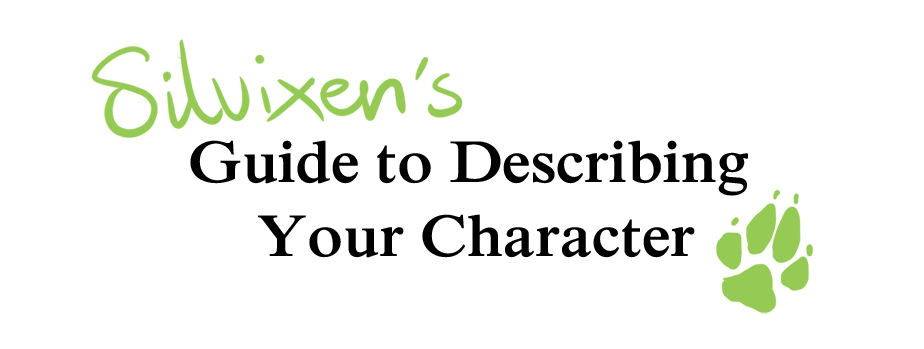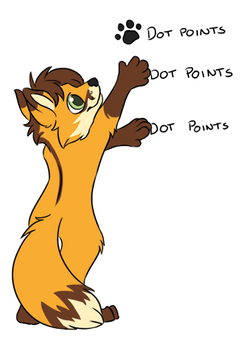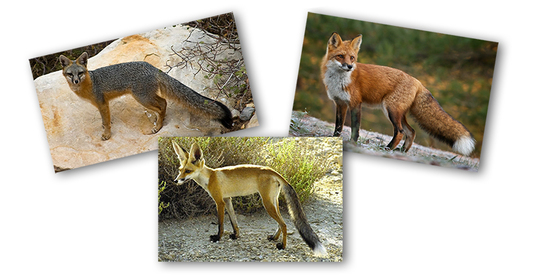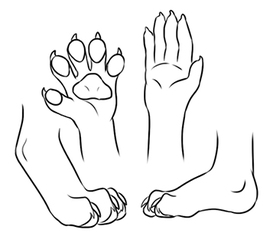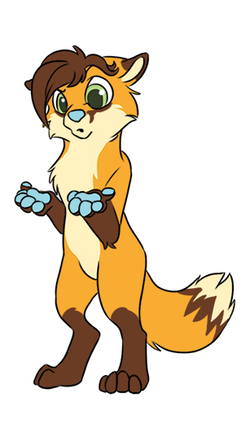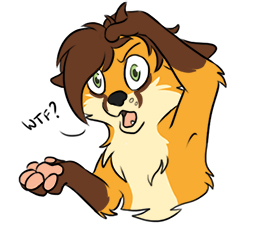
As an online based artist I am very often asked to draw reference sheets of someone's brand new character from scratch. It has become increasingly obvious that some people are good at describing their character for me to draw, and some people are so vague and confusing that it takes me twice as long just to decipher the text and then have to ask an additional 20 questions. Communication is key when designing a fresh character sheet. The following things can happen if things are not communicated properly:
- The client is left with something they don't want due to an artist not wanting to take the time to correct things.
- The artist is forever correcting things because the client is never sure exactly what they want.
- The commission is cancelled completely due to the frustration of either party.
Organising your information...
First thing's first, any information you have no matter how basic or detailed it is, needs to be put into dot points. From experience I can say that paragraph descriptions are a labyrinth of repeated information, missing details and often extremely hard to understand wording. Even if you don't miss a single detail writing it I can guarantee the artist reading it will. Dot points can be used as a check list, they're easily revised by both parties and the information can be ordered and sectioned in the most convenient way possible.
Basic Appearance...
|
Species: Be specific. Fox, wolf, cat; these are classes of animals but not specific breeds or species. It may seem trivial, but difference animals have different facial structures, tail lengths, fur lengths etc. The same goes for hybrid characters. Make sure you're clear as to what animal is most prominent in what body part.
Physique: If there is a specific body type you want the best way to communicate this is with a visual example. There is no way to accurately describe an amount of muscular toning, fat percentage, breast size or anything like that without a visual reference to back it up. Make sure your artist has something to look at be it another drawing or a photo. Hands & Feet: Is you character digigrade (walks on the balls of their feet) or plantigrade (walks on whole foot)? If planti, do they have four toes or five? Are their hands human-like or more paw-like? Do they have paw pads on their hands? Do their claws retract or are always visible? Basic things that may not be the first thing that come to mind but you'll look at it later and think "man. I wish I'd been specific." Other: There are also things specific to each character such as wings, tail lengths, fluffiness, extra body parts. Make sure they're included and clear. This includes hair, and hair almost always should have a visual reference to accompany the description. |
Colours...
Start with the basics. Figure out what colours you need and give each a name, eg. main colour, secondary colour, underfur colour. Anything like that will work, just make sure each colour has only one name. Then, and this is where you get really specific, go to a colour chart website like this and find the hex codes for the colours you want. These codes are universal and easy for the artist to google search. This guarantees you get the colours you want every time. Or better yet, jump on paint and make the colour pallet yourself, then give the artist the file with each colour named. Either way make sure you lay out your colours before you describe anything.
Markings...
Here's where organising your colours comes in handy. This is the hardest part of any ref sheet because you're trying to explain the specifics of something only you can see. There is no limit to how precise you can be when describing markings and there is no reason you can't throw as many visual aids into the mix as humanly possible. If there is a character out there that looks very similar to yours, link it, and tell the artist exactly what is similar. In fact the very best way to make this step easy for everyone is grab a free character template (Male - Female) and fill it in yourself. You can do it on paint, with pencil, whatever works for you. (Marking Reference)
If there are no visuals out there that can help then here's an example of how I'd describe some markings of my character Kita without visual aid:
Underfur Colour Locations
Secondary Colour Locations
Hopefully you can visualise what I'm talking about there, especially if you don't know the character I'm describing. See how organised it is?
Finally if you character has a tattoo or anything too specific to describe then use visuals, there's no way around it.
If there are no visuals out there that can help then here's an example of how I'd describe some markings of my character Kita without visual aid:
Underfur Colour Locations
- Entire inner ear fluff
- Tail tip (jagged zig zag that meets secondary colour)
- Front of body including front of neck, chest, abdominal area, crotch and extending 1/4 down the inner thighs.
- Lower face including sides and bottom of muzzle, extending up to the eyes and down into the cheek fluff. Connects with neck.
Secondary Colour Locations
- Ear tip, covers 1/2 of ear
- Hair
- Stripe vertically down the back that starts from the hair and ends before the tail
- Muzzle tick which extends back to under the eye (like eyeliner)
- 3/4 up both forearms (socks)
- 3/4 up both calves/shins (socks)
- Jagged zig zag ring on tail. Starts roughly 2/3 down the tail and separates main colour from underfur colour.
Hopefully you can visualise what I'm talking about there, especially if you don't know the character I'm describing. See how organised it is?
Finally if you character has a tattoo or anything too specific to describe then use visuals, there's no way around it.
Commonly forgotten body parts...
Depending on the species of your character there are a massive amount of things that can be neglected so I'll just list what I've come across.
Head: Inner ear fluff, eyes, nose, inside of mouth, horns/antlers.
Body: Tail tip, paw pads, claws, hooves, genitalia (if required).
Make sure you have a colour designated to all these things. If you can see it, it needs a colour.
Head: Inner ear fluff, eyes, nose, inside of mouth, horns/antlers.
Body: Tail tip, paw pads, claws, hooves, genitalia (if required).
Make sure you have a colour designated to all these things. If you can see it, it needs a colour.
Clothes & Accessories...
Google images is your friend. Not every artist is going to know what certain clothing items are called or what you've got in mind when you describe an outfit. No doubt the clothing or accessory you want is something you've seen before. Find it online and include the image. Easiest way to go, trust me.
Commissioning your sheet...
Now it's time to commission your sheet and you've got your description ready! Shove all your info in you note/email and this is the most important thing, ask/pester your artist to provide you with a version of you character with all the markings, colours and whatever else marked out BEFORE they finish it. Make sure you ask for this from the beginning so that you're able to change anything you don't like before the work is done. Most artists should offer this anyway and they should also give you multiple updates on the progress of your character, but we all know some artists are grumpy bums in it for the money and won't make the effort unless you bug them. So bug them! There's nothing worse than putting in all that effort to describe something and at the end of the day, walking away with something you hate. Always remember the character is yours and you should get exactly what you want. Don't let the artist make artistic changes based on their own opinion unless it's already been agreed upon. Don't get pushed around. They're happy to work for you (most of the time) and do exactly what you say, so don't be afraid to say it.
Finally if an artist doesn't have a terms of service or isn't willing to lay out the exact process of designing a character and staying in contact with you, avoid them. New character sheets can often be a difficult thing and no matter how well you're prepared the artist may not be. Look for experience. Someone who's already made plenty of sheets for themselves and preferably others as well. Finding other happy customers is always a good sign.
Finally if an artist doesn't have a terms of service or isn't willing to lay out the exact process of designing a character and staying in contact with you, avoid them. New character sheets can often be a difficult thing and no matter how well you're prepared the artist may not be. Look for experience. Someone who's already made plenty of sheets for themselves and preferably others as well. Finding other happy customers is always a good sign.
Now get out there and get some pictures...
You're all set! You can now commission as many images of your character as you want and you never have to go through that ugly process ever again! I hope it was worth it!
